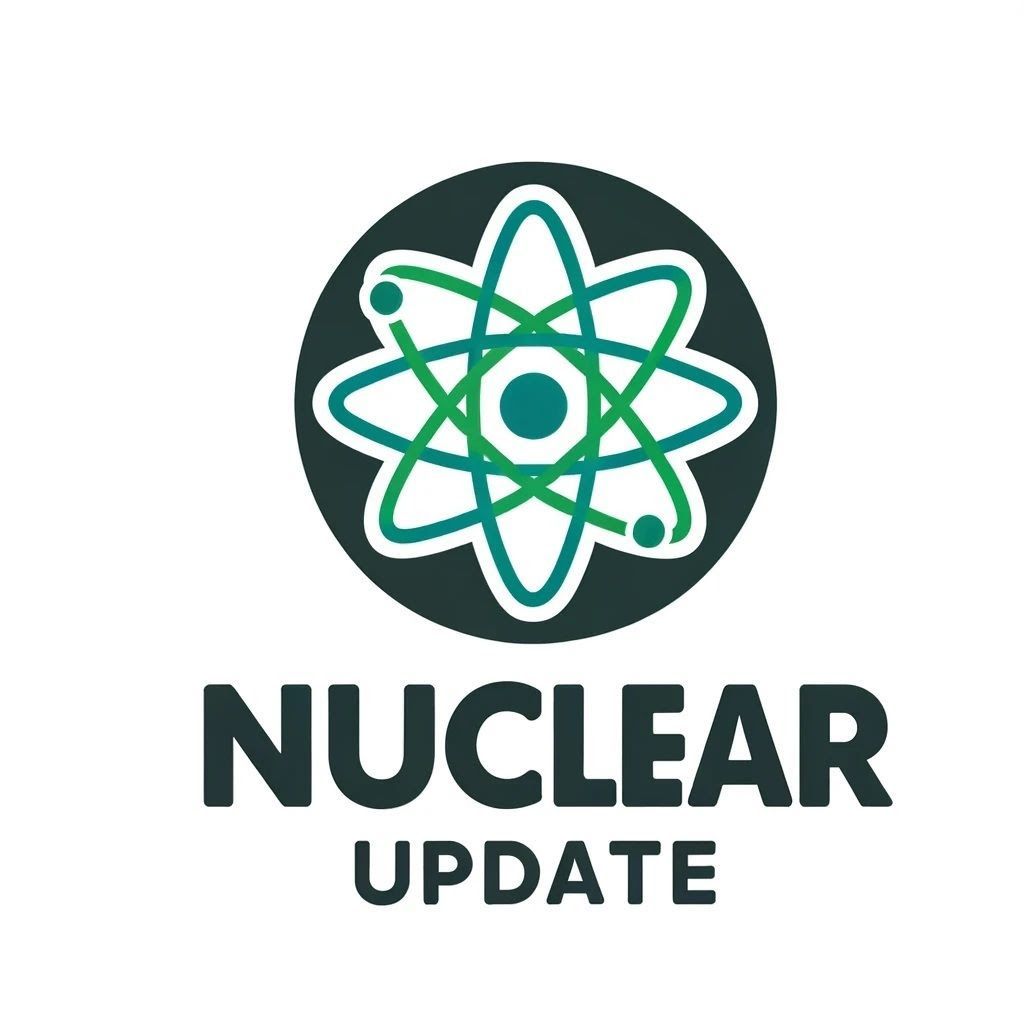- Nuclear Update
- Posts
- ⚛️U.S. to Build $80B in New Nuclear Reactors
⚛️U.S. to Build $80B in New Nuclear Reactors
PLUS: Google to Restart Duane Arnold Nuclear Power Plant

Welcome to Nuclear Update.
Today I learned that if someone steals uranium, it becomes...theiranium.
Alright, let’s jump straight in before this pun decays any further:
⚛️U.S. to Build $80B in New Nuclear Reactors
🚀Google to Restart Duane Arnold Nuclear Power Plant
🔥The First Advanced Reactor Gets the Green Light
❤️🔥Nuclear Powered Hearts
But first: this week’s trivia question:
Which of the following is a use of nuclear technologies? |
Last week, I asked: Which element was used in the U.S. “Megatons to Megawatts” program that turned Soviet warheads into reactor fuel?
You said:
🟩🟩🟩⬜️⬜️⬜️ Uranium (28%)
🟨⬜️⬜️⬜️⬜️⬜️ Thorium (14%)
⬜️⬜️⬜️⬜️⬜️⬜️ Californium (2%)
🟨🟨🟨🟨🟨🟨Plutonium (56%)

CleanTech CTV is back sponsoring the newsletter, and for good reason. They’re tackling one of the most underrated bottlenecks in the entire nuclear fuel cycle: fluorspar.
It’s the rock nobody talks about but every reactor depends on. No fluorspar means no hydrofluoric acid, no UF₆ gas, and no enriched fuel. Basically, no nuclear anything.
While everyone talks uranium and reactors, CleanTech CTV is not only mining, but building the missing middle that turns mined minerals into the materials reactors actually run on. They’re reviving the historic Illinois–Kentucky Fluorspar District and planning one of the first U.S. processing plants capable of turning raw fluorspar into acid-grade material again.
It’s a back-to-basics play that could help rebuild America’s nuclear supply chain from the chemistry up.
If you missed it, I covered the whole story (memes included) in last week’s deep dive:
Big thanks to CleanTech CTV for supporting the newsletter and helping keep Nuclear Update glowing. ⚛️
Now, let’s dive into the good stuff!💥

⚛️U.S. to Build $80B in New Nuclear Reactors
It’s finally happening: nuclear is moving from talk to construction. The U.S. government has signed an $80 billion partnership with Westinghouse Electric Company to build a new fleet of reactors across the country, the largest nuclear build program since the 1970s.
Japan is backing the plan with its own $100 billion financing for U.S.-based projects, helping fund construction and revive the shared U.S.–Japan nuclear industrial base.
The goal is simple: meet surging power demand from AI data centers and heavy industry while rebuilding America’s nuclear supply chain.
In return for federal backing, taxpayers get a cut of the upside, 20% of Westinghouse profits beyond $17.5 billion (and a potential 20% equity stake if the company goes public.)
$80 billion funds about ten AP1000s, or roughly 11.8 GW of new capacity, which pushes total U.S. nuclear generation back above 100 GW.
$8 billion/unit seems in line with the trend. Vogtle 4 finished about 40% cheaper than Unit 3. Standardization and repetition cut costs and shave months.
China, Korea, and Russia all hit 5–7 years construction times by running continuous, standardized programs. This is how the U.S. gets back to that cadence, rebuilds the industrial base, and competes in exports again.
Westinghouse have said the U.S. build program targets initial construction starts around 2030.
Fuel reality: Ten new reactors add roughly 5 000 000 pounds of U3O8 per year, about 300 million pounds over 60 years. That is twice today’s global annual mine output, from one program.
🎥Curious how the mainstream is framing it? Watch Reuters’ take on the agreement here:

🚀Google to Restart Duane Arnold Nuclear Power Plant
Google and NextEra Energy have partnered to restart the Duane Arnold Energy Center in Iowa, the 615 MW Boiling Water Reactor that shut down in 2020 after 45 years of service.
The partnership locks in a 25-year power-purchase deal that gives Google 24/7 carbon-free power for its cloud and AI infrastructure, while NextEra locks in a 25-year contract that makes the economics work for the restart. Iowa’s largest co-op, CIPCO, will buy the remaining output on the same terms.
The plant is expected to come back online in early 2029, supplying clean baseload power to the Midwest’s rapidly growing data-center corridor. Google alone has invested over $6.8 billion in Iowa’s data infrastructure, and this project anchors its regional power supply for decades.
Duane Arnold’s restart is another confirmation of what we have known for years: restarting existing plants is the fastest, cheapest way to scale carbon-free baseload power.
🎥 Watch how Google plans to bring Iowa’s only nuclear plant back online:

⚛️This week’s news confirms it: everything is aligning for the nuclear play.
We’ve got policy backing, government spending, Big Tech flooding into the sector, and uranium demand compounding through reactor restarts and life extensions.
If you’ve been waiting for the signal, this is it.
In Nuclear Update Premium, we track the cycle from policy to portfolio, covering market sentiment, uranium prices, insider moves, and how to position before the next leg up.

⛽How Do You Refuel a Nuclear Reactor?
Every two years, one of America’s largest nuclear power plants shuts down for one of the most precise operations in energy: refueling.
This is the Columbia Generating Station, Washington’s only commercial nuclear plant, safely powering more than a million homes since 1984.
Inside its boiling water reactor, 764 fuel assemblies and 185 control rods work together to generate over 1,200 megawatts of clean, carbon-free electricity, enough to light up Seattle’s skyline several times over.
But even nuclear needs a pit stop. During refueling, engineers replace about one-third of the reactor’s uranium fuel assemblies, inspect every system, and upgrade key components to keep the plant running for decades to come.
It’s one of the most complex maintenance operations in the energy world, and one of the safest.
🎥Watch how the Columbia Generating Station refuels the power of the Pacific Northwest:

🔥The First Advanced Reactor Gets the Green Light
TerraPower’s Natrium project just became the first advanced reactor in history to receive a positive Environmental Impact Statement from the NRC, the last major regulatory hurdle before full construction.
The plant, now in development in Kemmerer, Wyoming, is designed around a 345 MWe sodium-cooled fast reactor paired with molten salt energy storage, a setup that can flex up to 500 MWe during peak demand. That combination gives it something no other reactor has, the ability to run steady baseload power while also behaving like a giant battery.
TerraPower has already started work on the non-nuclear parts of the site, with the final safety evaluation expected by the end of 2025. Once approved, the company can begin full nuclear construction, setting the stage for what will likely become America’s first utility-scale advanced reactor.
And while TerraPower is breaking ground in Wyoming, founder Bill Gates made the Bloomberg headlines this week warning that China is outspending the rest of the world combined on nuclear innovation, investing heavily in both fission and fusion. Still, Gates believes the Natrium project proves the U.S. can compete, if it stays focused and funds its domestic buildout.
He also made headlines this week for a different reason: walking back his long-held climate doomsday stance, saying climate change “won’t lead to humanity’s demise.” It’s a shift that feels timely (and maybe even a little poetic.)
After all, nothing says “solution over panic” quite like finally building the next generation of clean, dispatchable nuclear power.
🎥Want to learn more about the Natrium Reactor? Check out this video:

❤️🔥Nuclear Powered Hearts
Welcome back to Atomic Alternatives, where we highlight nuclear technology outside the reactor, the clever, the strange, and the occasionally radioactive ways atoms have powered the world.
This week: nuclear-powered pacemakers.
Yes, that was a real thing. In the late 1960s, before lithium batteries became mainstream, scientists built pacemakers that ran on tiny pellets of plutonium-238.
Each device contained a miniature thermoelectric generator that converted the heat from radioactive decay into a steady electrical current, enough to keep a human heart beating for decades without a single battery change.
The appeal was obvious: no surgeries every few years to replace dead batteries, just one implantation and you were set for life. Literally.
Around 160 of these nuclear pacemakers were implanted in patients across the U.S. and Europe, and as of today, estimates suggest that a few dozen may still be inside living patients, likely fewer than 20 worldwide.
When recipients pass away, the U.S. Department of Energy retrieves the devices for safe handling (each one contains a small, shielded nuclear heat source). And get this, when recovered, most were still producing usable power decades later.
That’s nuclear reliability in a nutshell: energy that outlasts the people it serves.
The program was eventually phased out in the 1980s, mostly due to public fear and stricter nuclear regulations. But the idea never fully died. The same isotope, Pu-238, still powers NASA’s deep-space probes today, proving that whether it’s a pacemaker or a spacecraft, sometimes the most dependable battery is a bit of the atom’s own fire.

😂Meme of The Week

That’s a wrap for this week’s edition. The good news is flowing faster than fresh concrete at a reactor site.
Until next time: stay charged, stay critical (like a reactor), and keep glowing 😎
— Fredrik
Want to support the newsletter? Join Nuclear Update Premium. It really helps me keep the newsletter going.
💪Review of the Week

What did you think of this week's email? |
DISCLAIMER: None of this is financial advice. This newsletter is strictly educational and is not investment advice or a solicitation to buy or sell any assets or to make any financial decisions. Please be careful and do your own research
Reply